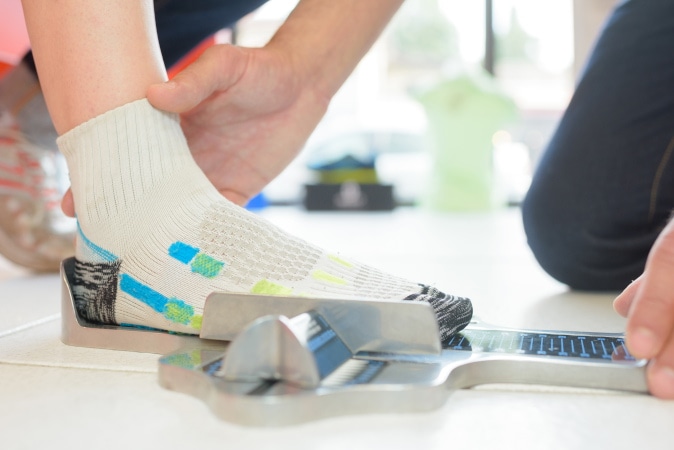You’re a grown adult. You’ve been buying your own shoes since you were a teenager. You know what fits you and what doesn’t.
Right?
Let us guess. The shoes you’re wearing right now? You’ve had those for a few years. More than a few. They’ve served you well, they’re comfortable, and that’s all that matters.
Right…?

Actually, you might want to take a closer look. Many people believe that once your feet stop growing, they level out, remaining roughly the same size for the rest of your life.
But this isn’t actually true. Elderly adults experience a wide variety of changes to the shape, size, and feeling of their feet as they age.
A recent study study shows how very widespread this incorrect belief actually is, and the damage it’s doing to elderly adults may surprise you.
The study explains that, “In this stage of life, there are changes in foot morphology involving increased width and length, as well as changes in pain tolerance, linked to age, and the loss of muscle mass and fatty tissue on the feet.”
Not as Obvious as it Might Appear
During the study, the team examined the feet and footwear of 100 adults over the age of 65. Astoundingly, they found that 83% of the participants were wearing the wrong size shoe on at least one foot – shoes were either too big, too small, or the wrong width.
Interestingly, many participants required different sizes for the left and right foot.
Their results “strongly indicate that the choice of appropriate footwear is not as obvious as it might appear and highlight the need for health education in the area of foot care.”
Neuropathy and Pain Tolerance
Additionally, the study discovered that while only 19% of seniors were regularly checking their feet, over 70% exhibited signs of neuropathy – loss of sensation in the feet. Neuropathy increases a patient’s pain tolerance, which stifles the body’s natural warning system.
The result is a perfect storm for podiatric complications.
Dr. Bob Baravarian, Director of University Foot and Ankle Institute, weighed in: “Most seniors don’t realize their feet are changing shape right underneath them. Given how many are suffering from neuropathy, it’s easy to see why so many seniors are wearing shoes that don’t fit.”
Heightened Risk of Injury and Illness
Wearing the wrong size shoes can increase the risk of losing balance and falling, and lead to a lower quality of life. Chronic pain, infections, and the loss of mobility are among some of the chief concerns raised by the study.
Combined with other chronic diseases – vascular disease, obesity, rheumatoid arthritis, and diabetes – it’s no small wonder that elderly people experience a 71%-87% increase in the prevalence of foot problems, such as:
- Skin irritation
- Bunions
- Plantar keratoses
- Diabetic foot ulcers
Find the Right Footwear
This study confirms what podiatrists have long suspected: inadequate footwear is an incredibly common phenomenon for seniors and it’s costing patients their quality of life. If you are over the age of 65, make an appointment to have your feet sized by a foot and ankle specialist.
- Is Bunion Surgery Covered By Insurance? - January 28, 2025
- Top 10 Non-Surgical Treatments for Morton’s Neuroma - January 20, 2025
- Moore Balance Brace: Enhance Stability and Prevent Falls for Better Mobility - December 16, 2024
My mother’s rheumatoid arthritis (RA) started two years ago at the age of 49; and her life was not the same. it started with traveling joint pain. she went to many doctors, it took a year to diagnose, and the only reason my mother was diagnosed was RA. This article was helpful, thank you.